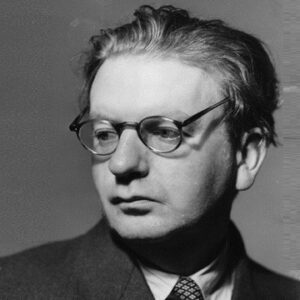John Logie Baird FRSE, also known as “The Father of Television,” was a Scottish engineer. He was a pioneer who developed the first successful mechanical television, as well as the first publicly demonstrated color television system and the first purely electronic color television picture tube. He showed an aptitude for electronics at a young age, having experimented with remote-controlled photography and rigged a telephone exchange to connect his home to that of his neighbors. He was inspired to create television after reading a German book about the photoelectric properties of selenium when he was in his teens. When he learned of Arthur Korn’s incredible achievement, his dream became a possibility. Korn had succeeded in inventing a circuit that could transmit fax images over any required distance, and Baird attempted to apply the concept to live or moving images. Baird used a telephone line to transmit a long-distance television signal (438 miles) from London to Glasgow. Soon after, he demonstrated the first transatlantic transmission, as well as the first stereoscopic television and video recording device, through his Baird Television Development Company Ltd. He made significant contributions to the fields of fibre optics, radio imaging, secret signaling, and infrared scanning in addition to television.
Childhood and Adolescence
John Logie Baird was born on August 13, 1888, in Helensburgh, Scotland, to Reverend John Baird and Jessie Morrison Inglis, as their fourth and youngest child.
He attended Helensburgh’s Larchfield Academy before enrolling at Glasgow and West of Scotland Technical College to study electrical engineering in 1906. Before he could graduate, the First World War broke out.
Career of John
Because of his chronic illness, John Logie Baird was unable to serve in the military and instead worked for the Clyde Valley Electrical Power Company for a time. After the war, he tried several failed businesses before moving to Britain in 1920.
Arthur Korn invented the first successful signal-conditioning circuit for image transmission in the first decade of 1900, allowing fax pictures to be sent by telephone/wireless even across oceans. For television, Baird used the same mechanism.
In 1923, he moved to Hastings and rented a workshop, where he built the world’s first working television out of an old hatbox, scissors, darning needles, bicycle light lenses, a tea chest, sealing wax, and glue.
He successfully demonstrated a semi-mechanical analogue television by transmitting moving silhouette images at the Radio Times office in 1924. Later that year, in his workshop, he received a severe electric shock. Baird left the apartment after the landlord asked him to leave.
In 1925, he gave his first public demonstration of moving images via television at the Selfridges department store in Soho, London, which was followed by a three-week series of demonstrations.
The first television picture he successfully transmitted was a grayscale image, a 30-line vertically scanned image sent at five frames per second. He went to the office of the ‘Daily Express’ to announce his invention to the public, but was ejected.
He had improved the scan rate to 12.5 pictures per second by 1926, and he demonstrated it in his laboratory to members of the Royal Institution and a reporter from ‘The Times.’ Live moving images with tone graduation were shown to the audience.
In 1927, he used a telephone line to send the world’s first long-distance (438-mile) television pictures from London to Glasgow’s Central Hotel.
In 1928, he achieved color transmission by using scanning discs with three spirals of aperture at the transmitting and receiving ends. At the receiving end of the spirals, there were three primary color filters and three light sources. The illumination was switched on and off by a commutator.
He established the Baird Television Development Company Ltd, which broadcast the first transatlantic television transmission from London to New York in 1928.
In 1929, Baird and Bernard Natan founded Television-Baird-Natan, France’s first television company. The Epsom Derby was the company’s first live broadcast in 1931.
In 1930, he demonstrated a two-foot-by-five-foot theatre television system at the London Coliseum, Berlin, Stockholm, and Paris. He improved and modified this system into a projection system that could televise on a 15-foot-by-12-foot screen within a decade.
Baird’s system was used by the British Broadcasting Corporation (BBC) for the first public television service in 1932. After the Baird facility at Crystal Palace caught fire in 1937, the BBC stopped broadcasting through the Baird system and switched to the Marconi-EMI version.
Major Projects of John
John Logie Baird is known as the “Father of Television” because he was the inventor of the first publicly demonstrated color television system and played a key role in the invention of the mechanical television that transmitted moving silhouette images.
Achievements & Awards
In 2014, he was inducted into The Honor Roll of the Society of Motion Picture and Television Engineers (SMPTE), which “recognizes individuals who were not awarded Honorary Membership during their lifetimes but whose contributions would have been sufficient to warrant such an honor.”
Personal History and Legacy
In 1931, John Logie Baird married Margaret Albu and had two children, Diana and Malcolm. In February 1946, he suffered a stroke and died on June 14, 1946, at the age of 57. The Logie Awards on Australian television are named after him.
Estimated Net Worth
John is one of the wealthiest entrepreneurs and one of the most well-known. John Logie Baird’s net worth is estimated to be around $20 million, according to Wikipedia, Forbes, and Business Insider.


